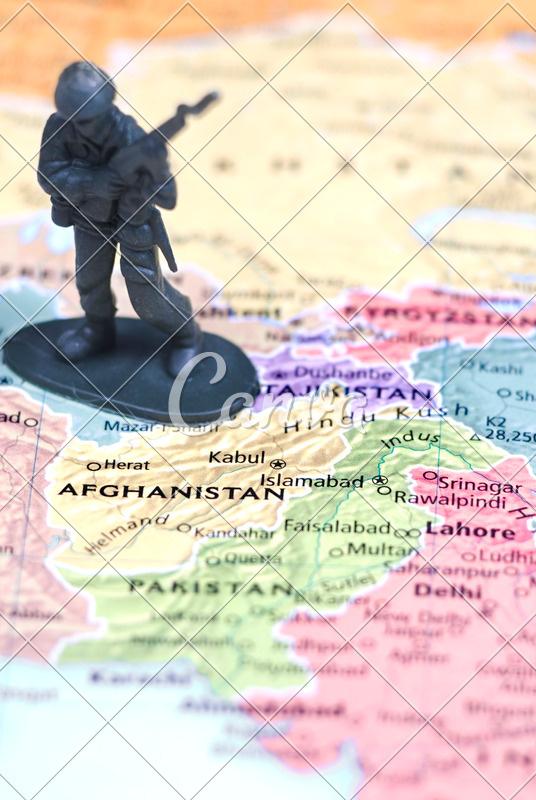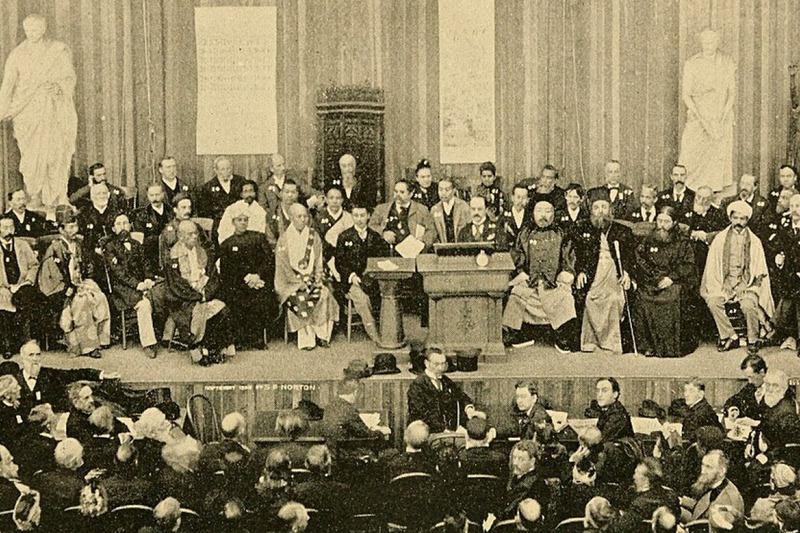THE ROLE OF RELIGION IN CONFLICT AND GOVERNANCE
IPSS, AAU
Presented by Dessalegn Masrie
Feb, 06, 2024


IPSS, AAU
Presented by Dessalegn Masrie
Feb, 06, 2024

4. The role of religion in relation to conflict and governance
4.1. Interfaith movements for conflict prevention and resolution
4.2. Religion as drivers of conflict
4.3. Religion as driver of peace-Religious beliefs and values
4.4. Islam and faith based terrorism
4.5. Ways to promote the transformative power of religion
4.6. The challenges and opportunities of violent extremism


Religionisacomplexandmultifacetedconcept.
At its core, it encompasses a wide array of beliefs, practices, rituals, and moral values that are centered on the acknowledgment or worship of a divine or supernatural power(s).
This acknowledgment often forms the basis of individuals' or communities' worldview and guides their actions and interactionswithinsociety.

Durkheim, 1915 CONTINUE
Emile Durkheim, a pioneering sociologist, described religion as a social institution in his seminal work "The Elementary Forms of Religious Life" (1915).
Durkheim emphasized the role of religion in fostering social cohesion and solidarity within communities by providing shared symbols, values, and norms.
According to Durkheim, religious rituals and practices serve to reinforce collective identity and reinforce social bonds among members of a community.
However, religion is not solely confined to matters of spirituality and personal belief; it also holds significant implications for governance and conflict resolution within societies.
The ways in which religious beliefs intersect with political power structures and societal norms can profoundly shape the dynamics of governance and contribute to both stability and conflict.
Understanding the multifaceted nature of religion is crucial for examining its role in conflict and governance.
By acknowledging its diverse manifestations and the myriad ways it influences human behavior and societal organization, we can better grasp the complexities of religious dynamics in both peaceful coexistence and periods of strife.

to explore the multifaceted role of religion in conflict and governance, examining historical examples, contemporary challenges, and potential solutions.
By understanding the complexities of this relationship, we can better address conflicts and promote effective governance in diverse societies.

The interplay between religion, conflict, and governance is characterized by its complexity and dynamism, reflecting the multifaceted nature of human societies.
Across different cultures and historical periods, religion has served as both a source of conflict and a catalyst for peace, exerting a profound influence on governance structures and shaping political decisions.

Scholarship on this subject, such as the work of Daniel Philpott (2007), underscores the intricate relationship between religion, conflict, and governance.
Daniel Philpott
Throughout history, religious beliefs and institutions have been implicated in conflicts ranging from local disputes to large-scale wars.
Differences in: religious doctrine, rituals, and practices have fueled tensions among diverse communities, leading to sectarian violence, religious persecution, and even religiously motivated terrorism.
At the same time:
Religion has also played a pivotal role in conflict resolution and peacebuilding efforts.
Religious leaders and institutions have often served as mediators and peacemakers, leveraging their moral authority and spiritual teachings to promote reconciliation and dialogue among conflicting parties.
Religious values such as compassion, forgiveness, and social justice have inspired movements for peace and social change.
It has implications for governance structures & political decision-making processes.
Religious authorities wield significant influence over political affairs, shaping laws, policies, and social norms based on religious principles.
This intertwining of religion and governance can either contribute to stability and social cohesion or exacerbate divisions and tensions within society, depending on the context and the nature of the political system.

By examining the complex interactions between religion, conflict, and governance, scholars and policymakers can gain insights into the underlying drivers of social and political dynamics.
Recognizing the potential for both cooperation and conflict inherent in religious beliefs and practices, efforts to promote peace, justice, and effective governance must take into account the diverse religious landscapes and the complex interplay between religion and society.
Interfaith movements encompass a diverse array of initiatives and organizations that seek to promote dialogue, cooperation, and collaboration among adherents of different religious traditions.
These movements emphasize the importance of recognizing and respecting religious diversity while working towards common goals and shared values.
Scholars such as Brock (2014) define interfaith movements as platforms for facilitating interaction and engagement between individuals and communities of varying faith backgrounds.

Interfaith movements hold significant importance in contemporary society due to their role in addressing religious tensions, fostering mutual respect, and building bridges across cultural and religiousdivides.
In a world characterized by increasing globalization and interconnectedness, religious diversity is a defining feature of manycommunities.
 Dave Appleby
Dave Appleby
Scholars such as Appleby (2000) emphasize:
the transformative potential of interfaith movements in addressing religiously motivated conflicts and promoting reconciliation.
Through their efforts to promote understanding, empathy, and cooperation interfaith initiatives help to break down stereotypes, prejudices, and promote a culture of peace and tolerance. By fostering relationships of trust and solidarity across religious boundaries, interfaith movements play a crucial role in building a more just and compassionate world.
strive to identify and address the root causes of religious tensions and disputes before they escalate into violence. Scholars such as Marshall (2008) emphasize the importance of early intervention and proactive measures in addressing potential sources of conflict within and between religious communities.
By fostering dialogue, promoting understanding, and addressing grievances, interfaith movements aim to create environments where conflicts can be resolved through peaceful means rather than resorting to violence.
work towards the resolution of existing conflicts by promoting dialogue, reconciliation, and mutual understanding among conflicting parties.
Scholars such as Abu-Nimer (2001) highlight the role of interfaith dialogue in facilitating communication and negotiation between communities in conflict.
Through structured dialogues, mediation efforts, and peacebuilding initiatives, interfaith movements seek to build trust, facilitate the exchange of perspectives, and promote the peaceful resolution of disputes.
Aimed at building sustainable peace and fostering social cohesion within diverse communities.
Scholars such as Sisk (2010) emphasize the importance of addressing underlying grievances and promoting reconciliation processes that contribute to longterm stability and harmony.
Interfaith initiatives often involve community development projects, educational programs, and grassroots initiatives that promote tolerance, inclusivity, and respect for diversity.
serves as a fundamental strategy employed by interfaith movements to foster understanding, respect, and cooperation among representatives from different religious communities.
Scholars such as Sampson (2011) highlight the transformative potential of dialogue in breaking down barriers, challenging stereotypes, and building relationships based on mutual respect and understanding. Through structured dialogues, interfaith movements create opportunities for participants to learn from one another, cultivate empathy, and work towards building more inclusive and harmonious societies.
involve joint efforts by religious organizations and communities to address shared challenges and promote common goals.
Scholars such as Hawley (2008) highlight the power of collective action in mobilizing resources, expertise, and networks to address complex social issues.
By pooling resources, sharing best practices, and leveraging diverse perspectives, interfaith collaborations contribute to more effective and sustainable solutions to pressing societal problems.
These collaborations also serve to strengthen interreligious bonds and promote solidarity among diverse communities.
aimed at promoting policies and practices that uphold religious freedom, tolerance, and respect for diversity at local, national, and international levels.
Scholars such as Juergensmeyer (2017) emphasize the importance of speaking out against religious discrimination, persecution, and marginalization, and advocating for the rights of religious minorities and vulnerable communities.
It may involve lobbying policymakers, raising public awareness through campaigns and media outreach, and mobilizing grassroots support for legislative and policy changes.

The Parliament of the World's Religions: stands as one of the oldest and largest interfaith organizations globally.
Since its inception in 1893, it has been instrumental in bringing together religious leaders, scholars, and activists from diverse faith traditions to promote peace, justice, and sustainability. Through its conferences, summits, and educational programs, the Parliament of the World's Religions provides a platform for dialogue, collaboration, and collective action on pressing global issues.
By fostering interreligious understanding and cooperation, it contributes to building a more inclusive and harmonious world.

Founded in 2000, URI operates through a network of grassroots groups known as Cooperation Circles, which engage in interfaith cooperation, dialogue, and community service projects around the world.
Through its diverse initiatives, including peacebuilding workshops, environmental conservation projects, and youth empowerment programs, URI promotes interreligious understanding and fosters collaborative efforts to address shared challenges.
By empowering individuals and communities to bridge religious and cultural divides, URI contributes to building a more interconnected and compassionate world.

Founded in 1997, the institute conducts scholarly research on interfaith relations, publishes academic journals and books, and organizes conferences and seminars aimed at fostering peace and reconciliation among religious communities.
Through its educational programs, including interfaith leadership training and youth interfaith camps, The Elijah Interfaith Institute equips individuals with the knowledge and skills needed to engage in constructive dialogue and bridge religious divides.
By promoting a deeper understanding of diverse religious traditions and encouraging mutual respect and cooperation, the institute contributes to building a more inclusive and pluralistic society.

Interfaith movements have had a significant impact on: reducing religious tensions, promoting social cohesion, and fostering peace in conflict-affected regions worldwide.
Scholars such as Abu-Nimer and Kadayifci-Orellana (2012) highlight the positive outcomes of interfaith initiatives in mitigating conflicts and promoting reconciliation among communities of different religious backgrounds.
Through dialogue, collaboration, and advocacy efforts, interfaith movements have helped to build bridges of understanding and mutual respect, thereby contributing to the creation of more inclusive and harmonious societies.
By promoting interreligious cooperation and addressing root causes of conflict, these movements have played a crucial role in promoting sustainable peace and stability in diverse cultural and religious contexts.
interfaith initiatives face numerous challenges that hinder their effectiveness in addressing religious conflicts and promoting peace. Scholars such as Philpott and Shah (2011) point out several key challenges faced by interfaith movements, including:
MISTRUST Sectarianism Political manipulation Resource constraints
Deep-seated mistrust and historical animosities between religious communities can undermine efforts to foster dialogue and cooperation. Prejudices, stereotypes, and past grievances may create barriers to building meaningful relationships and finding common ground among conflicting groups.
Interfaith movements often grapple with internal divisions and sectarianism within religious communities, which can impede efforts at collaboration and dialogue. Intra-religious conflicts and disagreements may overshadow broader interfaith initiatives and undermine unity and solidarity among participants.
Interfaith initiatives may be susceptible to political manipulation and instrumentalization by external actors seeking to advance their own agendas. Political leaders or extremist groups may exploit interfaith platforms for propaganda purposes or to further sectarian interests, thereby undermining the credibility and neutrality of interfaith efforts.
Interfaith movements often operate with limited resources, which can pose challenges in sustaining longterm peacebuilding and conflict resolution initiatives. Funding shortages, logistical constraints, and capacity limitations may hinder the scalability and impact of interfaith programs, particularly in conflictaffected regions with limited infrastructure and support systems.
4.2

Religion can become a source of conflict when religious beliefs, practices, or identities are manipulated or exploited to justify violence, discrimination, or exclusion.
As highlighted by Appleby (2000), conflicts often arise when religious doctrines or symbols are weaponized to incite hatred, justify acts of aggression, or perpetuate systems of oppression.
In such cases, religion ceases to be a source of moral guidance and instead becomes a tool for advancing narrow political agendas or asserting dominance over others.
Recognizing the role of religion as a driver of conflict is crucial for developing strategies to mitigate its negative impacts and promote interfaith understanding and cooperation.

By understanding the complex interplay between religion, politics, and societal dynamics, policymakers, scholars, and practitioners can identify early warning signs of religiously motivated violence and implement targeted interventions to prevent escalation.
Moreover, acknowledging the potential for religious narratives to fuel intolerance and division underscores the importance of promoting religious literacy, intercultural dialogue, and respect for diversity as essential components of peacebuilding efforts.
By addressing the root causes of religiously motivated conflict and promoting inclusive approaches to governance and social cohesion, societies can harness the transformative potential of religious diversity and build more resilient and harmonious communities.
Conflicts often stem from varying interpretations of religious texts, doctrines, or beliefs, which can lead to sectarianism and religious extremism.
Scholars like Juergensmeyer (2017) point out that when individuals or groups adhere rigidly to particular interpretations of religious teachings, they may view those with differing interpretations as heretical or apostate, thus fostering animosity and conflict. Moreover, extremist interpretations that advocate for violence or intolerance can further exacerbate tensions and fuel religiously motivated conflicts. In such cases, religious ideology becomes a potent force driving division and hostility among communities.

Religion frequently intertwines with ethnic, national, or political identities, exacerbating intergroup tensions and conflicts.
As noted by Gurr (2000), individuals often perceive their religious identity as inseparable from their broader sense of self and belonging.
Consequently, conflicts rooted in religious differences may also reflect deeper divisions based on ethnicity, nationality, or political affiliation.
These overlapping identities can intensify feelings of " us" versus "them," heightening intergroup animosities and increasing the likelihood of violent conflict.
Additionally, grievances related to discrimination or marginalization based on religious identity can further fuel social unrest and communal violence.

Religious institutions and leaders frequently seek to gain or maintain power by mobilizing religious sentiments and identities, leading to conflicts over authority and governance.
Toft (2011) observes that religious actors often wield significant influence in shaping political agendas and mobilizing support for specific policies or ideologies.
In contexts where religion plays a central role in governance, disputes over religious authority and control may escalate into broader conflicts over political power and resource allocation.
Moreover, external actors, including states and non-state actors, may exploit religious divisions for their own strategic interests, further complicating efforts to resolve religiously motivated conflicts.
Overall, these factors highlight the complex interplay between religion, identity, power, and politics in driving religious conflicts.

Sectarian conflicts, such as those between:
Sunni and Shia Muslims in the Middle East or Catholics and Protestants in Northern Ireland, are fueled by religious differences and historical grievances. Scholars like Hinnebusch (2012) and Hamber (2007) have extensively documented how sectarian tensions rooted in divergent interpretations of religious beliefs have escalated into violent confrontations, including bombings, assassinations, and communal riots. These conflicts often perpetuate cycles of retaliation and deepen social divisions, resulting in significant human suffering and loss of life.

Nationalist movements based on religious identity, such as Hindu nationalism in India or Buddhist nationalism in Myanmar, have resulted in discrimination, violence, and ethnic cleansing against minority religious groups.
Varshney (2002) and other scholars have highlighted how the assertion of religious nationalism has fueled communal tensions and led to targeted attacks against religious minorities, including Muslims, Christians, and other marginalized communities.
These movements often promote exclusionary ideologies that seek to marginalize or eliminate religious and cultural diversity, undermining principles of pluralism and tolerance.

Extremist groups like ISIS or Al-Qaeda justify their violent actions through distorted interpretations of religious doctrines, leading to terrorist attacks and conflicts in various regions.
Scholars such as Stern and Berger (2015) have extensively analyzed how these groups exploit religious symbols and narratives to recruit followers, incite violence, and destabilize societies.
The actions of religious extremists have resulted in mass casualties, widespread destruction, and profound social upheaval, posing significant challenges to global peace and security.
Religious conflicts have severe humanitarian consequences, leading to displacement, loss of life, and humanitarian crises that disproportionately affect vulnerable populations.
As documented by the United Nations High Commissioner for Refugees (UNHCR, 2006), religiously motivated violence often results in forced displacement, with individuals and families fleeing their homes to escape persecution, violence, and discrimination.
Displacement disrupts livelihoods, separates families, and strains resources, exacerbating the plight of already marginalized communities. Moreover, religious conflicts impede humanitarian aid efforts, hindering access to essential services such as food, shelter, and healthcare for those in need.
Religious conflicts undermine social cohesion and trust among communities, perpetuating cycles of violence and deepening divisions.
Scholars such as Philpott and Shah (2011) note that conflicts rooted in religious differences erode social bonds and fracture intergroup relations, fostering mistrust, fear, and animosity between religious communities. As tensions escalate, individuals and communities may retreat into enclaves, further isolating themselves from one another and exacerbating social fragmentation.

Religious conflicts have broader implications for global security, contributing to instability, radicalization, and the proliferation of violent extremism.
Juergensmeyer (2003) and other scholars have observed that religiously motivated violence can spill over national borders, fueling regional conflicts and creating security challenges with far-reaching consequences. Moreover, religious conflicts provide fertile ground for extremist groups to recruit new members, exploit grievances, and propagate their ideologies of hate and intolerance.

The proliferation of violent extremism poses significant threats to international peace and security, necessitating coordinated efforts by the global community to address root causes and prevent the spread of radicalization and terrorism.
Religious beliefs and values can indeed serve as powerful drivers of peace, inspiring individuals and communities to promote reconciliation, forgiveness, and social justice.

While religion is often associated with conflict, it is important to recognize its potential as a source of peace and reconciliation. Despite the prevalence of religiously motivated conflicts, many religious traditions espouse principles of love, compassion, and nonviolence, which serve as guiding principles for peacemaking and reconciliation.
By acknowledging the dual role of religion—as both a source of conflict and a source of peace—we can better understand its complex impact on societies and develop strategies to harness its positive potential.

Religious beliefs and values have motivated individuals and communities to engage in acts of compassion, forgiveness, and peacemaking across diverse cultural and religious contexts.
Throughout history, religiousleaders and movements have played pivotal roles in promoting peace and social justice, advocating for the rights of marginalized groups, and challenging systems of oppression.
By emphasizing values such as empathy, humility, and solidarity, religious teachings inspire individuals to transcend their differences and work towards common goals of peace and reconciliation.

Many religious traditions emphasize the importance of compassion, empathy, and care for others, motivating individuals to alleviate suffering and promote social justice.
As highlighted by Armstrong (2011), teachings from various religious texts and traditions encourage believers to cultivate empathy and compassion towards all living beings, regardless of differences in faith, nationality, or background. By fostering a sense of interconnectedness and shared humanity, these values inspire acts of kindness, generosity, and solidarity, which are foundational to promoting peace and harmony in societies.

Religious teachings often emphasize the value of forgiveness and reconciliation, encouraging individuals to overcome grievances and work towards healing and reconciliation.
Philpott (2010) explores how forgiveness, rooted in religious beliefs about divine mercy and redemption, can serve as a powerful catalyst for personal and societal transformation.
By letting go of resentment and embracing reconciliation, individuals can break the cycles of violence and revenge, paving the way for healing and restoration of relationships.
Moreover, religious rituals and practices related to forgiveness, such as confession and repentance, provide opportunities for individuals to seek forgiveness and extend mercy to others, fostering a culture of reconciliation and peace.
Religious traditions such as Buddhism, Jainism, and Christianity advocate for nonviolent resistance and social justice, inspiring movements for peace and human rights.
Galtung (1996) explores how religious principles of nonviolence and justice have influenced transformative movements led by figures such as Mahatma Gandhi, Martin Luther King Jr., and Desmond Tutu.
By embracing nonviolent resistance as a moral imperative, these movements have challenged oppressive systems and promoted societal change based on principles of equality, dignity, and human rights.

A. Mahatma Gandhi:
Mahatma Gandhi's philosophy of nonviolent resistance, rooted in Hindu and Jain traditions, played a crucial role in India's independence movement and inspired civil rights movements around the world (Gandhi, 1948).
Gandhi's approach, outlined in his writings such as "Hind Swaraj" and "Satyagraha in South Africa," emphasized the power of truth and nonviolence in confronting injustice and oppression.
Through acts of civil disobedience, mass protests, and peaceful resistance, Gandhi mobilized millions of Indians in their struggle for independence from British colonial rule.
His commitment to ahimsa (nonviolence) and satyagraha (truthforce) not only led to India's liberation but also influenced movements for civil rights, social justice, and peace worldwide.

B. Martin Luther King Jr.:
Dr. Martin Luther King Jr.'s Christian faith motivated his commitment to nonviolence and civil rights, leading to transformative social change in the United States (King, 1963).
Inspired by his Christian beliefs and the teachings of Jesus Christ, King advocated for racial equality, justice, and reconciliation during the civil rights movement of the 1950s and 1960s.
Drawing on principles of love, forgiveness, and nonviolent resistance, King led boycotts, marches, and campaigns to challenge segregation and institutionalized racism.
His famous "I Have a Dream" speech and leadership in the Montgomery Bus Boycott and the March on Washington galvanized support for the civil rights movement, ultimately leading to landmark legislative victories such as the Civil Rights Act of 1964 and the Voting Rights Act of 1965.

C.Desmond Tutu:
Archbishop Desmond Tutu's advocacy for truth and reconciliation in post-apartheid South Africa, grounded in Christian teachings, helped heal wounds and promote national unity (Tutu, 1999).
As chair of the Truth and Reconciliation Commission (TRC), Tutu facilitated a process of acknowledging past injustices and promoting forgiveness and reconciliation among victims and perpetrators of apartheid-era atrocities.
Guided by Christian principles of forgiveness, redemption, and justice, Tutu emphasized the importance of confronting the truth and acknowledging the humanity of all individuals, regardless of their past actions.
His leadership and moral authority played a pivotal role in South Africa's transition to democracy, fostering a spirit of reconciliation and laying the foundation for a more inclusive and just society.
Religious peacebuilding initiatives contribute to building trust, fostering dialogue, and promoting social cohesion within and between communities.
Scholars such as Abu-Nimer and Kadayifci-Orellana (2012) highlight how religious leaders and organizations serve as influential mediators and facilitators of dialogue, bringing together diverse stakeholders to address shared concerns and promote understanding.
By providing spaces for interfaith cooperation and collaboration, religious peacebuilding efforts create opportunities for individuals and communities to bridge divides, build relationships, and work towards common goals.
This fosters a sense of belonging and solidarity, strengthening social bonds and promoting a culture of peace and tolerance.

Religious values of forgiveness and reconciliation facilitate the transformation of conflict dynamics, leading to sustainable peace and justice.
Drawing on the work of scholars like Lederach (2005), religious peacebuilding initiatives seek to address the underlying causes of conflict and promote healing and reconciliation among conflicting parties.
By emphasizing principles of forgiveness, empathy, and compassion, religious leaders and organizations help individuals and communities move beyond cycles of violence and revenge, towards a shared vision of peace and reconciliation.
This transformative approach to conflict resolution promotes longterm stability and resilience, laying the groundwork for sustainable peacebuilding and social transformation.

Religious organizations and leaders play key roles in delivering humanitarian assistance, promoting development, and addressing root causes of conflict in conflict-affected regions.
Clarke and Jennings (2008) highlight how religious institutions often have extensive networks and resources at their disposal, enabling them to provide essential services such as food aid, healthcare, and education to vulnerable populations.
Moreover, religious leaders frequently advocate for policies and practices that address systemic injustices, promote human rights, and advance sustainable development goals.
By mobilizing their constituencies and leveraging their moral authority, religious actors contribute to creating enabling environments for peace and development, fostering conditions conducive to long-term stability and prosperity.


Extremist interpretations of religious beliefs can hinder peacebuilding efforts and perpetuate cycles of violence and intolerance.
As highlighted by Appleby (2000), extremist ideologies that justify violence in the name of religion pose significant challenges to efforts aimed at fostering dialogue, reconciliation, and mutual understanding.
These ideologies often distort religious teachings to promote exclusionary and supremacist agendas, fueling intergroup tensions and undermining trust between communities.
Addressing religious extremism requires comprehensive strategies that address underlying grievances, promote religious literacy, and empower moderate voices within religious communities to counter extremist narratives and promote peacebuilding alternatives.
Opportunities for interfaith dialogue and cooperation provide platforms for building bridges across religious divides and promoting shared values of peace and compassion.
Marsden (2001) emphasizes the importance of fostering interfaith understanding and cooperation as a means of transcending religious differences and addressing common challenges. Interfaith initiatives create spaces for individuals and communities to engage in constructive dialogue, challenge stereotypes, and build relationships based on mutual respect and understanding.
By recognizing the inherent dignity and worth of all individuals, regardless of religious affiliation, interfaith cooperation fosters a sense of solidarity and collective responsibility for promoting peace and justice.


Investing in religious literacy and empowering religious leaders and communities can enhance their capacity to promote peace and social justice.
Abu-Nimer (2001) underscores the importance of providing education and training opportunities that equip religious leaders with the knowledge, skills, and resources to engage in peacebuilding efforts effectively.
By promoting critical thinking, empathy, and conflict resolution skills, religious education programs can empower individuals and communities to challenge divisive narratives, promote interfaith understanding, and advocate for positive social change.
Moreover, by investing in grassroots initiatives that address local needs and empower marginalized communities, stakeholders can harness the potential of religious actors as agents of peace and transformation in their respective contexts.
The intersection of Islam and terrorism has been a subject of intense scrutiny and debate, particularly in the aftermath of terrorist attacks carried out by individuals and groups claiming Islamic motivations. Understanding the complex relationship between Islam and terrorism is crucial for combating extremism and promoting peace and understanding within Muslim communities and beyond.
The association of Islam with terrorism is a contentious and sensitive issue, often influenced by media portrayals, political agendas, and cultural biases.
In the aftermath of terrorist attacks perpetrated by individuals and groups claiming Islamic motivations, Islamophobia and anti-Muslim sentiment have intensified, exacerbating tensions and fueling stereotypes.
Examining the factors contributing to faithbased terrorism within Islam is essential for addressing root causes and developing effective strategies for counterterrorism.
It's essential to recognize the nuances and complexities surrounding the intersection of Islam and terrorism, avoiding simplistic narratives that stigmatize entire communities based on the actions of a few.
By understanding the ideological, social, and political dynamics at play, policymakers, scholars, and practitioners can implement targeted interventions to prevent radicalization, disrupt terrorist networks, and promote community resilience.

Faith-based terrorism refers to acts of violence perpetrated by individuals or groups who claim religious justifications for their actions, often invoking religious texts, doctrines, or ideologies to justify violence.
As described by Sageman (2004), faith-based terrorism is characterized by the perpetrators' belief that their violent actions are sanctioned or commanded by their religious beliefs.
These individuals or groups may interpret religious teachings in ways that justify or glorify violence against perceived enemies or adversaries, often framing their actions as part of a sacred duty or divine mandate.
Faith-based terrorism can manifest in various forms, including suicide bombings, armed attacks, and acts of sabotage, with perpetrators citing religious motivations as a primary driver for their actions.
Faith-based terrorism within Islam is a multifaceted phenomenon influenced by a range of social, political, economic, and ideological factors.
Understanding the complexity of faith-based terrorism requires a nuanced approach that acknowledges the interplay of religious, social, and political factors.
By examining the root causes and drivers of extremism within Muslim communities and beyond, policymakers, practitioners, and scholars can develop more effective strategies for preventing radicalization, countering violent extremism, and promoting peace and stability.

Many instances of Islamic terrorism are rooted in political grievances, including perceived oppression, marginalization, and injustice experienced by Muslim communities.

As outlined by Hafez (2007), historical and contemporary conflicts, such as foreign interventions, authoritarian regimes, and discriminatory policies, have fueled resentment and anger among Muslim populations, leading to feelings of disenchantment and alienation.
These grievances may be exploited by extremist groups seeking to mobilize support for their violent agendas, framing acts of terrorism as legitimate responses to perceived injustices and injustices perpetrated by state actors or external powers.
Radical interpretations of Islamic teachings and ideologies, often promoted by extremist groups, can justify acts of violence against perceived enemies of Islam.
Scholars such as Stern and Berger (2015) highlight how extremist organizations exploit religious texts and doctrines to propagate ideologies of hate, intolerance, and violence.
By promoting a distorted and extremist version of Islam, these groups manipulate religious narratives to recruit followers, incite violence, and legitimize acts of terrorism.
This ideological extremism not only distorts the true teachings of Islam but also undermines efforts to promote peace, tolerance, and coexistence within Muslim communities and beyond.

Economic disparities, unemployment, and lack of opportunities can contribute to feelings of disenfranchisement and alienation, making individuals susceptible to recruitment by terrorist organizations.
As noted by Kepel (2002), socioeconomic marginalization and structural inequalities create fertile ground for radicalization, particularly among marginalized and disaffected youth.
In regions affected by poverty, corruption, and underdevelopment, extremist groups may exploit economic grievances to recruit individuals into their ranks, offering promises of empowerment, belonging, and purpose.
Addressing socioeconomic factors is therefore essential for preventing radicalization and countering the appeal of violent extremism, by promoting inclusive development, economic opportunities, and social cohesion within communities.


Negative stereotypes and misconceptions about Islam and Muslims perpetuate fear, discrimination, and prejudice, exacerbating social tensions and alienating Muslim communities.
As highlighted by Esposito and Mogahed (2007), Islamophobia manifests in various forms, including hate speech, discriminatory policies, and acts of violence targeting Muslims.
These prejudices are often fueled by media sensationalism, political rhetoric, and cultural biases, leading to widespread misconceptions about Islam as a religion and Muslims as a community.
Islamophobia not only harms individuals and communities by fostering prejudice and discrimination but also undermines efforts to build trust, promote inclusivity, and address the root causes of extremism.

Oversimplifying the relationship between Islam and terrorism ignores the diverse interpretations of Islam and the complex sociopolitical dynamics driving extremism.
Juergensmeyer (2017) cautions against reducing the phenomenon of terrorism to religious ideology alone, emphasizing the importance of considering the myriad factors that contribute to radicalization and violence.
While religious beliefs may play a role in shaping extremist ideologies, they are often intertwined with political grievances, socioeconomic disparities, and identity-based conflicts. By oversimplifying the issue, policymakers, media outlets, and public discourse risk reinforcing stereotypes, stigmatizing entire communities, and neglecting the multifaceted nature of extremism.
Marginalizing Muslim communities and treating them as suspects rather than partners in counterterrorism efforts can undermine trust and cooperation.
Said (1997) warns against the consequences of securitized approaches to counterterrorism that target Muslim communities based on suspicion and surveillance. Such approaches not only violate civil liberties and human rights but also breed resentment and alienation, further exacerbating the conditions conducive to radicalization. Building trust and cooperation requires engaging with Muslim communities as allies and stakeholders in efforts to prevent extremism, address grievances, and promote inclusive societies.


Effective counterterrorism strategies involve addressing root causes of extremism, dismantling terrorist networks, and promoting community engagement and cooperation.
Scholars such as Schmid and Jongman (2005) emphasize the importance of adopting a comprehensive approach to counterterrorism that goes beyond reactive security measures to address the underlying drivers of radicalization and violence.
This includes addressing grievances related to political oppression, socioeconomic marginalization, and identity-based conflicts, which can fuel feelings of resentment and alienation exploited by extremist groups.
Empowering moderate voices within Muslim communities and promoting religious literacy and critical thinking can help counter extremist narratives and ideologies.
Qamar (2009) underscores the importance of investing in education and empowerment initiatives that equip individuals and communities with the knowledge, skills, and resources to challenge extremist ideologies and resist recruitment efforts. This includes supporting grassroots organizations, religious leaders, and educators who promote messages of peace, tolerance, and moderation within their communities.
Moreover, promoting religious literacy and critical thinking skills enables individuals to discern between authentic religious teachings and extremist interpretations, empowering them to reject violence and embrace peaceful alternatives. By investing in education and empowerment, stakeholders can build resilience against extremism and promote a culture of moderation, tolerance, and respect for diversity.
Interfaith dialogue initiatives foster mutual understanding, respect, and cooperation among diverse religious communities, contributing to peace and social cohesion.
Abu-Nimer (2001) highlights the role of interfaith dialogue in bridging divides, challenging stereotypes, and building relationships based on shared values and common humanity.
By providing platforms for constructive engagement and dialogue, interfaith initiatives create opportunities for individuals and communities to learn from one another, explore common ground, and collaborate on issues of mutual concern. Moreover, interfaith dialogue promotes empathy, compassion, and solidarity, fostering a sense of belonging and interconnectedness that transcends religious differences.
By promoting interfaith dialogue, stakeholders can build bridges of understanding and cooperation, promote peaceful coexistence, and counter the narratives of division and hostility perpetuated by extremists.
Recognizing the transformative potential of religion, individuals, communities, and policymakers can take proactive steps to harness religious values and beliefs for promoting peace, social justice, and reconciliation.
By fostering interfaith cooperation, supporting religious leaders, and promoting religious literacy, the transformative power of religion can be leveraged to address societal challenges and promote positive change.

Religion has the capacity to inspire individuals and communities to work towards social transformation and positive change.
Throughout history, religious teachings and values have motivated people to advocate for justice, compassion, and human dignity, leading to movements for civil rights, peace, and reconciliation.
Recognizing the transformative potential of religion requires acknowledging its role as a source of moral guidance, community solidarity, and ethical action in addressing societal challenges.

Promoting the transformative power of religion is essential for addressing complex societal issues and fostering inclusive and peaceful societies. Religion can serve as a catalyst for social change by mobilizing individuals and communities to engage in acts of compassion, reconciliation, and solidarity.
By harnessing religious values and beliefs, policymakers, practitioners, and community leaders can cultivate environments conducive to dialogue, cooperation, and mutual respect across religious and cultural divides.
Embracing the transformative potential of religion offers opportunities for building bridges, healing divisions, and building a more just and equitable world for all.

Interfaith dialogue initiatives bring together representatives from different religious traditions to foster understanding, empathy, and cooperation. These initiatives provide platforms for individuals and communities to engage in constructive conversations, share perspectives, and explore common values and principles. By promoting dialogue and mutual respect, interfaith initiatives contribute to building bridges across religious divides and challenging stereotypes and prejudices. Through facilitated discussions, workshops, and events, participants have the opportunity to deepen their understanding of diverse religious perspectives and cultivate relationships based on trust and collaboration.
Interfaith collaborations involve collective efforts by religious communities to address shared challenges, such as poverty, inequality, and environmental degradation.
Recognizing the interconnectedness of social, economic, and environmental issues, religious organizations and communities come together to mobilize resources, expertise, and networks to address pressing issues affecting their communities and the world at large. By working jointly on projects and initiatives, interfaith collaborations demonstrate the power of cooperation and solidarity in tackling complex problems. Whether through humanitarian aid, advocacy campaigns, or community development projects, joint action initiatives harness the collective strength of diverse religious traditions to promote social justice, alleviate suffering, and build a more equitable and sustainable future.
Providing training and resources for religious leaders on conflict resolution, mediation, and peacebuilding equips them with the skills needed to promote peace and reconciliation. Religious leaders often hold significant influence within their communities and can play pivotal roles in mitigating conflicts, facilitating dialogue, and promoting reconciliation. By offering targeted training programs that enhance their capacity to address conflict-related challenges, religious leaders can effectively contribute to peacebuilding efforts. These training initiatives may include workshops, seminars, and educational programs focused on conflict analysis, negotiation techniques, interfaith dialogue, and trauma healing. By investing in the professional development of religious leaders, stakeholders can empower them to effectively respond to conflicts and promote sustainable peace within their communities.
Empowering religious leaders as agents of positive change and recognizing their efforts in promoting peace and social justice strengthens their influence and impact within communities. Religious leaders often serve as moral authorities and trusted mediators, capable of mobilizing communities and shaping public opinion. By empowering religious leaders to engage in peacebuilding initiatives and advocacy efforts, stakeholders acknowledge their potential to inspire positive transformation and foster inclusive societies. This empowerment can take various forms, including providing financial support for community projects, facilitating partnerships with civil society organizations, and involving religious leaders in decisionmaking processes. Additionally, recognizing and celebrating the contributions of religious leaders in promoting peace and social justice reinforces their credibility and encourages continued engagement in efforts to build a more peaceful and equitable world.
Religious literacy initiatives promote understanding and respect for diverse religious traditions, reducing stereotypes and misconceptions.
Esposito and Mogahed (2007) emphasize the importance of promoting religious literacy as a means of fostering interfaith dialogue and mutual respect.
By providing individuals with accurate and comprehensive knowledge about different religious beliefs, practices, and traditions, religious literacy initiatives enable them to engage with others in a more informed and respectful manner.
These initiatives may include educational programs, workshops, and resources designed to increase awareness and understanding of various religious perspectives.
By promoting empathy and appreciation for religious diversity, religious literacy initiatives contribute to building inclusive and harmonious societies.
Education programs that encourage critical thinking and dialogue about religious beliefs and practices enable individuals to engage constructively with religious diversity.
Abu-Nimer (2001) highlights the importance of fostering critical thinking skills as a means of promoting informed and respectful discourse about religion.
By encouraging individuals to question assumptions, challenge stereotypes, and engage in open-minded dialogue, these programs empower them to navigate complex religious issues with intellectual rigor and empathy.

Critical thinking education may involve discussions, debates, and reflective exercises that encourage participants to explore different perspectives and consider the implications of religious beliefs and practices on individuals and societies.
Advocating for policies and practices that uphold religious freedom and protect the rights of religious minorities contributes to fostering inclusive societies. Philpott and Shah (2011) highlight the importance of safeguarding religious freedom as a fundamental human right essential for respecting diversity and promoting social harmony. Advocacy efforts aimed at promoting religious freedom may include lobbying for legislation that prohibits discrimination based on religion, advocating for the protection of religious sites and practices, and raising awareness about the importance of religious pluralism. By advocating for policies that uphold religious freedom, stakeholders can create environments where individuals can freely express their religious beliefs and practices without fear of persecution or discrimination, thus fostering a culture of respect, tolerance, and inclusion.
Encouraging interfaith engagement in policymaking processes ensures that diverse religious perspectives are considered in addressing societal challenges and promoting social cohesion. Sampson (2011) emphasizes the importance of involving religious leaders and communities in policy discussions and decision-making processes to ensure inclusivity and representation. Interfaith engagement in policymaking may involve establishing dialogue forums, advisory councils, or task forces comprised of representatives from various religious traditions. These platforms provide opportunities for religious leaders and communities to voice their concerns, contribute insights, and collaborate on initiatives that address shared challenges. By incorporating diverse religious perspectives into policy development and implementation, stakeholders can promote social cohesion, build trust, and strengthen the bonds of solidarity across religious boundaries.
Grassroots initiatives led by religious communities address local needs and challenges, fostering social cohesion and solidarity. Hawley (2008) underscores the importance of community-based projects initiated and implemented by religious groups to address pressing issues within their neighborhoods and regions. These projects may include initiatives such as food drives, community clean-up efforts, educational programs, and healthcare services. By mobilizing resources and volunteers from within their communities, religious groups demonstrate their commitment to serving others and promoting the common good. Moreover, these grassroots initiatives provide opportunities for interfaith cooperation and collaboration, as religious communities come together to address shared concerns and work towards common goals. Through community-based projects, religious groups contribute to building stronger, more resilient communities grounded in compassion, solidarity, and mutual support.
Engaging youth in interfaith dialogue, service projects, and leadership development initiatives cultivates a new generation of peacemakers and bridge builders. Juergensmeyer (2017) emphasizes the role of youth as agents of change and advocates for their active involvement in interfaith initiatives. By providing opportunities for young people to participate in dialogue forums, volunteer projects, and skill-building workshops, stakeholders empower them to become catalysts for positive social change within their communities. Youth engagement initiatives may include interfaith youth camps, leadership training programs, and community service projects that promote understanding, empathy, and collaboration across religious and cultural divides. By investing in youth engagement, stakeholders not only harness the energy and creativity of young people but also sow the seeds for a future marked by peace, tolerance, and mutual respect.
Violent extremism refers to ideologies and actions that advocate or employ violence to achieve political, religious, or ideological objectives, often targeting civilians and non-combatants.
As noted by Horgan (2008), violent extremism encompasses a range of ideologies and tactics, including terrorism, hate crimes, and radicalization.
It is characterized by the use of violence as a means to advance specific agendas, often characterized by intolerance, radicalism, and extremist beliefs. Violent extremism poses significant challenges to global security, social cohesion, and human rights.

Violent extremism manifests in various forms and poses multifaceted challenges to individuals, communities, and governments worldwide. From terrorist attacks and mass shootings to online radicalization and hate speech, violent extremism threatens lives, undermines social cohesion, and erodes trust in democratic institutions. Its impact extends beyond physical violence, leading to fear, discrimination, and polarization within societies. As such, addressing violent extremism requires comprehensive approaches that address root causes, counter extremist narratives, and promote resilience within communities.

Social alienation and marginalization contribute to feelings of disenfranchisement and resentment, making individuals susceptible to extremist ideologies that offer a sense of belonging and purpose.
Radical ideologies that promote hatred, intolerance, and violence can radicalize individuals and groups, leading to acts of terrorism and violent extremism.
Political instability, governance failures, and conflict create environments conducive to violent extremism, as power vacuums and societal unrest provide opportunities for extremist groups to thrive.
Early intervention programs that identify individuals at risk of radicalization and provide support and counseling can prevent the escalation of extremist behavior.
B. Community Engagement:
Community engagement initiatives that build trust, promote social cohesion, and address grievances can counter extremist narratives and diminish the appeal of violent extremism.
C. Education and Empowerment:
Education programs that promote critical thinking, media literacy, and tolerance equip individuals with the skills needed to resist extremist ideologies and challenge divisive narratives.
Extremist groups use propaganda, social media, and community networks to recruit and radicalize individuals, exploiting vulnerabilities and grievances.
Silber and Bhatt (2007) highlight the sophisticated methods employed by extremist organizations to attract new members and indoctrinate them into their ideologies.
Through targeted messaging, online forums, and personal interactions, extremists identify and prey upon individuals who may feel marginalized, disenfranchised, or disillusioned with mainstream society.
By offering a sense of belonging, purpose, and empowerment, extremist recruiters manipulate susceptible individuals into embracing radical beliefs and justifying violent actions.
Addressing recruitment and radicalization requires comprehensive strategies that involve community engagement, counter-narratives, and support for at-risk individuals to prevent them from being drawn into extremist circles.
Violent extremist groups operate across borders, leveraging global connections and online platforms to disseminate ideologies, share resources, and coordinate attacks.
Rabasa et al. (2016) emphasize the transnational nature of violent extremism, facilitated by advances in technology and communication.
Extremist networks exploit cyberspace to recruit followers, disseminate propaganda, and coordinate terrorist activities, transcending geographical boundaries and jurisdictional limitations.
The interconnectedness of global extremist networks poses significant challenges to law enforcement and counterterrorism efforts, requiring enhanced international cooperation and intelligence sharing to disrupt terrorist financing, dismantle recruitment pipelines, and prevent cross-border attacks.
By addressing the transnational dimensions of violent extremism, stakeholders can strengthen border security, disrupt terrorist networks, and mitigate the threat of global terrorism.
Violent extremist ideologies compete for influence and legitimacy within and between communities, perpetuating cycles of violence and conflict.
Juergensmeyer (2003) discusses the ideological dimensions of violent extremism, where competing narratives vie for the allegiance of adherents.
Whether rooted in religious fanaticism, ethnonationalism, or political extremism, these ideologies fuel sectarianism, radicalization, and violent confrontation.
The ideological competition creates fertile ground for extremist groups to exploit grievances, demonize opponents, and justify acts of terrorism in the name of their cause.
Countering ideological competition requires promoting alternative narratives that uphold values of tolerance, pluralism, and nonviolence.
By fostering critical thinking, religious literacy, and interfaith dialogue, stakeholders can challenge extremist ideologies and promote inclusive narratives that resonate with diverse communities, thereby reducing the appeal of violent extremism.
Counterterrorism measures must strike a balance between protecting national security and upholding human rights, including civil liberties and due process.
Heymann & Kayyem (2012) emphasize the challenge of ensuring effective counterterrorism efforts while respecting fundamental rights and freedoms.
Measures such as surveillance, detention, and counter-radicalization programs can sometimes infringe upon individual rights and liberties, raising concerns about privacy, freedom of speech, and fair treatment under the law.
Striking the right balance requires robust oversight mechanisms, judicial review, and adherence to international legal standards to prevent abuses and safeguard democratic principles.
Moreover, counterterrorism strategies should prioritize prevention, intelligence gathering, and targeted interventions to minimize the need for intrusive measures that may undermine human rights protections.
Identifying individuals at risk of radicalization and intervening effectively to prevent their involvement in violent extremism requires community engagement, early intervention, and social support.
Bjørgo (2011) discusses the challenge of detecting and addressing the early signs of radicalization before individuals become entrenched in extremist ideologies.
Preventive measures may include outreach programs, mentoring initiatives, and counseling services that provide support and alternatives to individuals vulnerable to radicalization.
However, identifying at-risk individuals and gaining their trust requires collaboration between law enforcement, social services, and community organizations. Building strong community resilience, promoting positive youth engagement, and addressing underlying grievances are also essential components of effective prevention strategies.
Combatting extremist narratives and propaganda disseminated through online platforms and social media requires collaboration between governments, tech companies, and civil society.
Berger & Morgan (2015) highlight the challenge of regulating online content while respecting principles of free speech and digital privacy.
Extremist groups exploit the anonymity and reach of the internet to recruit followers, radicalize individuals, and incite violence, posing significant challenges to efforts to counter violent extremism.
Addressing online propaganda requires a multi-stakeholder approach that involves monitoring online activities, removing harmful content, and promoting counter-narratives that challenge extremist ideologies.
Tech companies play a critical role in developing algorithms and tools to detect and remove extremist content, while governments provide legal frameworks and resources to support these efforts.
Comprehensive strategies that integrate security, development, and human rights perspectives can address the root causes and drivers of violent extremism.
The United Nations (2016) advocates for multidisciplinary approaches that recognize the interconnected nature of security, socioeconomic development, and human rights in addressing violent extremism. By addressing grievances, promoting inclusive governance, and providing opportunities for socioeconomic advancement, multidisciplinary approaches can undercut the appeal of extremist ideologies and mitigate the conditions conducive to radicalization and violence. Moreover, such strategies emphasize the importance of respect for human rights, the rule of law, and accountability in countering violent extremism, ensuring that counterterrorism efforts are effective, sustainable, and rights-respecting.
Building trust, resilience, and social cohesion within communities through dialogue, empowerment, and civic participation can undermine extremist narratives and recruitment efforts.
McCauley & Moskalenko (2011) stress the importance of community-based approaches that empower local stakeholders to address the underlying drivers of violent extremism.
By engaging communities as partners in prevention and intervention efforts, stakeholders can build networks of trust and support that challenge extremist ideologies and promote alternative pathways for individuals at risk of radicalization.
Community engagement initiatives may include youth mentorship programs, interfaith dialogue forums, and grassroots projects that address local grievances and strengthen community resilience against extremist influences.
By fostering inclusive and participatory approaches, stakeholders can harness the collective strength of communities to prevent and counter violent extremism effectively.
Enhancing cooperation and coordination between countries, organizations, and stakeholders at regional and global levels is essential for countering transnational violent extremist threats.
The United Nations Security Council (UNSC, 2019) underscores the importance of international cooperation in addressing the cross-border dimensions of violent extremism, including terrorist financing, foreign fighter recruitment, and online radicalization.
By sharing intelligence, exchanging best practices, and coordinating counterterrorism efforts, countries can strengthen their collective response to violent extremist threats and prevent the spread of radical ideologies across borders.
Regional organizations, such as the European Union and the African Union, play critical roles in facilitating cooperation and capacity-building initiatives among member states to address regional security challenges.
Moreover, partnerships between governments, civil society organizations, and the private sector can leverage diverse expertise and resources to develop innovative solutions and strategies for countering violent extremism effectively.

